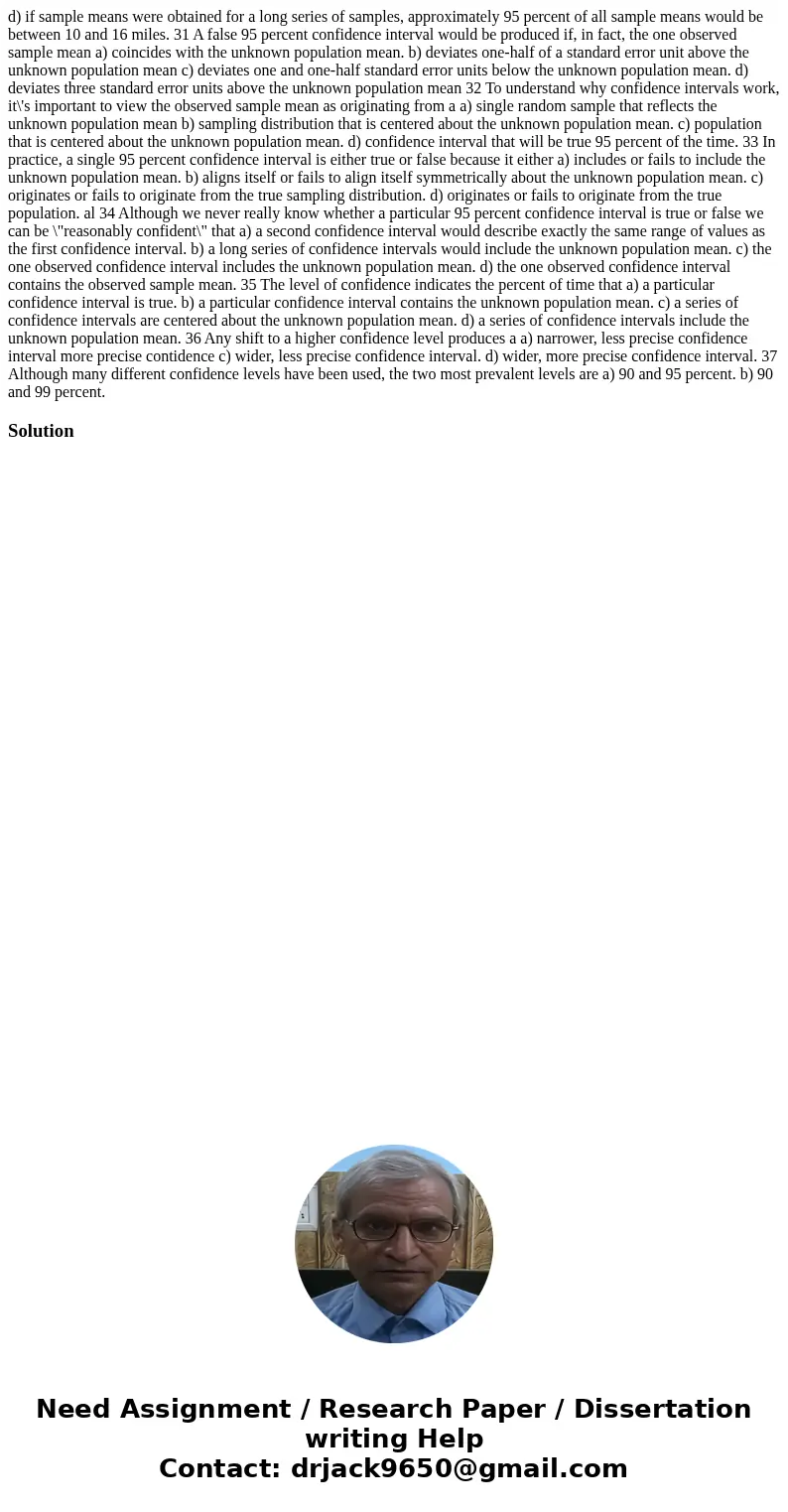d if sample means were obtained for a long series of samples
d) if sample means were obtained for a long series of samples, approximately 95 percent of all sample means would be between 10 and 16 miles. 31 A false 95 percent confidence interval would be produced if, in fact, the one observed sample mean a) coincides with the unknown population mean. b) deviates one-half of a standard error unit above the unknown population mean c) deviates one and one-half standard error units below the unknown population mean. d) deviates three standard error units above the unknown population mean 32 To understand why confidence intervals work, it\'s important to view the observed sample mean as originating from a a) single random sample that reflects the unknown population mean b) sampling distribution that is centered about the unknown population mean. c) population that is centered about the unknown population mean. d) confidence interval that will be true 95 percent of the time. 33 In practice, a single 95 percent confidence interval is either true or false because it either a) includes or fails to include the unknown population mean. b) aligns itself or fails to align itself symmetrically about the unknown population mean. c) originates or fails to originate from the true sampling distribution. d) originates or fails to originate from the true population. al 34 Although we never really know whether a particular 95 percent confidence interval is true or false we can be \"reasonably confident\" that a) a second confidence interval would describe exactly the same range of values as the first confidence interval. b) a long series of confidence intervals would include the unknown population mean. c) the one observed confidence interval includes the unknown population mean. d) the one observed confidence interval contains the observed sample mean. 35 The level of confidence indicates the percent of time that a) a particular confidence interval is true. b) a particular confidence interval contains the unknown population mean. c) a series of confidence intervals are centered about the unknown population mean. d) a series of confidence intervals include the unknown population mean. 36 Any shift to a higher confidence level produces a a) narrower, less precise confidence interval more precise contidence c) wider, less precise confidence interval. d) wider, more precise confidence interval. 37 Although many different confidence levels have been used, the two most prevalent levels are a) 90 and 95 percent. b) 90 and 99 percent. 
Solution

 Homework Sourse
Homework Sourse